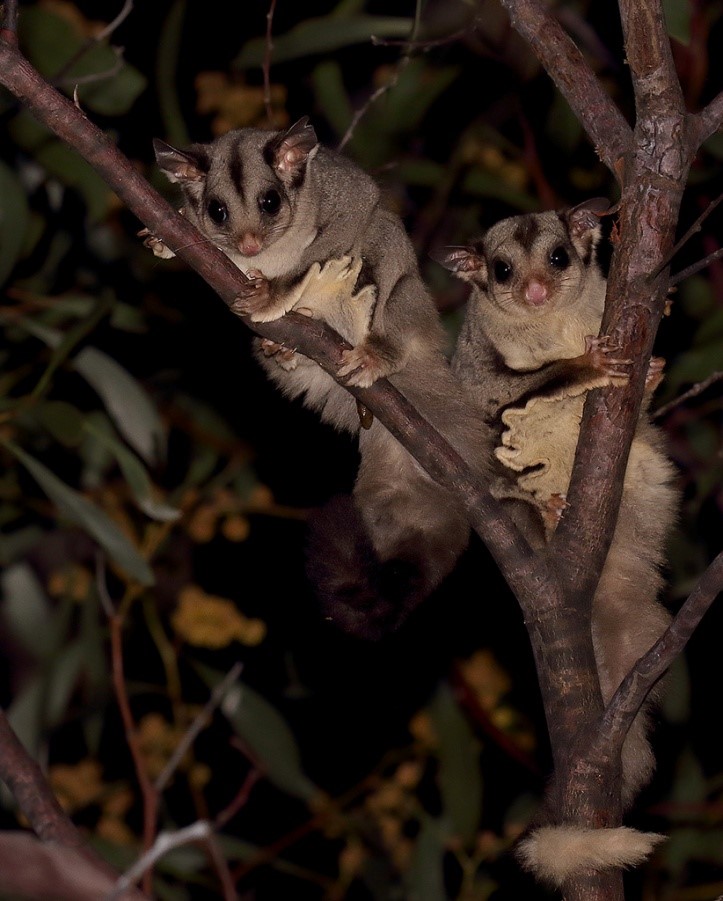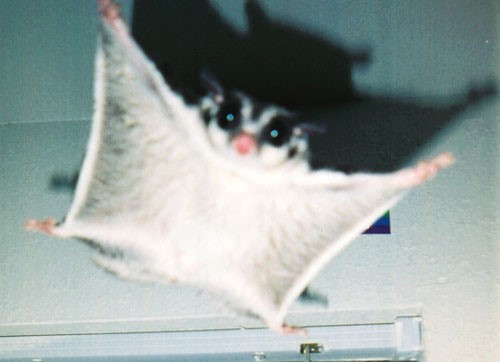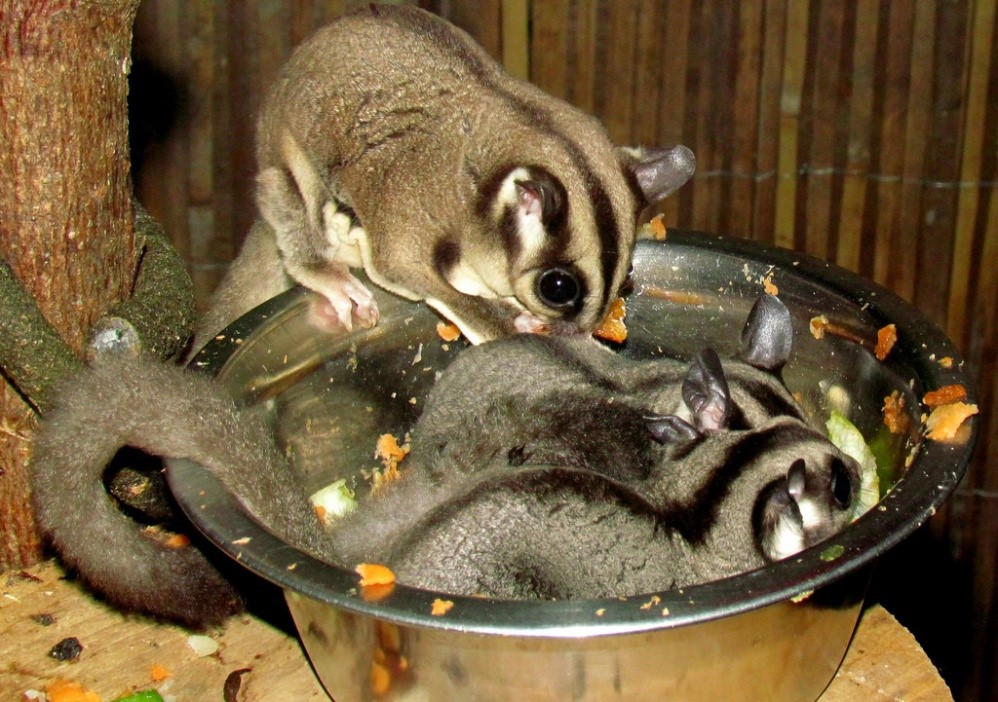Sugar gliders as Pets
Sugar gliders are small mammals that have become very popular relative to other exotic pets. While many people find them to be cute little animals, their size can be deceiving. These species are not the more basic ‘pocket pet’ types that can be placed in a standard hamster cage. The proper care of sugar gliders calls for a large cage, daily interaction, and a specialized diet. Sugar gliders, unlike common pet rodents, can have a lifespan of up to 14 years in captivity, so adopting one is a more significant commitment.
What are sugar gliders?

patrickkavanagh CC by 2.0 Via Flickr
- Sugar gliders have a lifespan of approximately 15 years in captivity.
- Sugar gliders are about the size of a grain of rice when they are born, and their young are called joeys.
- They are sexually dimorphic; the males are typically larger than the females. Males have 4 scent glands, including one of their foreheads where there is a visible bald spot.
- Depending on availability of prey, they are mostly insectivorous, feeding on sap, acacia gum and manna during the winter when insects are scarce.
Sugar gliders are marsupials just like kangaroos and they originate from Australia, New Guinea, and Indonesia. Despite a very similar appearance and mode of locomotion, they are not related to flying squirrels; their similarities are an example of convergent evolution, as both animals glide with flaps of skin between their legs. Like most other marsupials, sugar gliders live in their mother’s pouch when they are babies.
In the wild, sugar gliders live in tree tops. As their name suggests, these animals glide instead of fly to get from one tree to the other. The other part of their name is due to part of their diet, which includes sweet nectar and sap from trees. In addition to that, they also consume plants, fruit, insects, and sometimes vertebrate prey like birds and rodents. Sugar gliders are very social animals and live in colonies in the wild. Significant numbers of them have been bred in captivity and there are different color morphs available.

Maia Valenzuela CC by 2.0 Via Flickr
Behavior
Sugar gliders are very social creatures that will rely on you for their psychological welfare if they are kept alone. This requires a consistent taming process so that your pet will become used to you and remain friendly. If you keep more than one sugar glider they are more likely to bond with each other, therefore it is very important to provide thorough socialization so that they are still receptive to interacting with humans. Even if you don’t plan on playing with them, this can be important for things like vet care and reducing transportation stress.
Determining the emotional state of a sugar glider is rather easy due to their loud vocalizations. They emit a strange sound called “crabbing” when they are distressed or irritated and are more likely to act aggressively if this warning sound is ignored. As sugar gliders are nocturnal, they may make this sound if the owner disturbs them during the day.
Interacting with a sugar glider is different than doing so with other small pets like hamsters. These animals are quick like flying squirrels and can swiftly leap on your shoulder utilizing their namesake’s gliding maneuvers. Be sure to anticipate the active nature of sugar gliders and interact with them in a safe space with no open windows or places where they can evade capture.
Interacting
If your sugar glider is acquired young, you can carry them around in a special pouch or deep pocket to enhance the bonding process. When properly socialized, gliders will engage in these interactions well into adulthood. Older sugar gliders that are not tame or have been re-homed may be harder to bond with successfully, but it can be done to a smaller degree.
Sugar Glider Diet

Ozzy Delaney CC by 2.0 Via Flickr
Deciding on what to feed your sugar glider is a bit more involved than with most pets. There are many commercial diets available now, even in more conventional stores, but many glider keepers recommend specific products and homemade recipes. The right diet for a sugar glider should be a varied and nutritionally balanced mixture with the proper calcium to phosphorus ratio, as an imbalance can result in severe problems later in the animal’s life. Do not feed any vegetables that are high in phosphorus.
Main diet: Choose a recommended sugar glider diet. One example is the ‘Pet Glider Fresh Diet’, which uses ingredients including apple sauce, yogurt, fruits, orange juice, oatmeal, vegetables, and a cooked protein source such as chicken. You will process these ingredients by hand or with a food processor, which is recommended. The finished diet will be divided into ice cube trays or small containers and frozen for convenience.
Vitamin supplements: There are specially made multivitamins available for sugar gliders; do not use vitamins intended for any other species.
Treats: Sugar gliders can be offered a wide variety of food items in addition to their staple diet. Suitable treats for sugar gliders include freeze-dried or live insects, monkey biscuits, cereal, yogurt drops, dried fruits and vegetables, and others. You can also offer puréed vegetables and fruit daily. Sugar gliders should always have access to clean water.
The enclosure
How big should your sugar glider cage be? These animals are small but active, plus they love to climb. Therefore they should have a vertical-type cage with enough horizontal room that will allow them to jump from perch to perch. The most popular type of cages used for them are flight aviaries or similarly-designed enclosures specifically for sugar gliders and squirrels. A good minimum size would be 30” tall and 20” long, with a larger cage being ideal.
Like birds, the cage furniture should consist of ropes, braches, and ledges, plus hanging features such as hammocks and other hides. Sugar gliders benefit from an exercise wheel attached to the cage at mid level and various toys should be added to make the cage more interesting. The glider’s main sleeping quarters will be a nest box.







